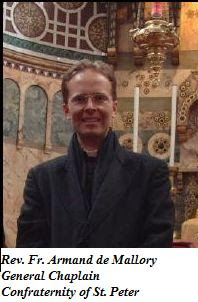
Archbishop of Westminster’s Reflection on the impact of the Christian Faith on society.
‘O Rising Sun, you are the splendour of eternal light and the sun of justice. O come and enlighten those who sit in darkness and in the shadow of death.’
These are the words of a special anthem for this evening in the Prayer of the Church. They add to the beauty of our evening celebration. But they also raise a question. As we enjoy the splendour of this celebration, do we think of ourselves among those who sit ‘in darkness’? It doesn’t seem too appropriate, really!
Yet there is a sobering thought that will not leave us. It will return the minute we step outside this Cathedral: our society is experiencing some hard times. And during them some are being hurt, and some are angry, as we have already seen.
So as we absorb this Christmas message, as we proclaim that the ‘Rising Sun is the splendour of eternal light and the sun of justice’, we must reflect on how we are responding. As a society we are, more often than not, capable of great generosity in the face of adversity. Every disaster illustrates this. Charity appeals are met with generosity. When hardship is before our eyes, a sense of solidarity will emerge. This is surely one of our sources of hope.
But it is difficult to sustain. In an emergency, we trust that life will quickly get back to normal so that we can each resume our customary patterns and get back to our own business. But what if this ‘emergency’ lasts? What if it becomes a lasting reality? Do we, then, simply turn back to our own and turn our backs on those in need? Or does the very nature of ‘our own business’ actually change?
In facing this challenge, the truth we proclaim this evening has something to say. Religious truth may not be particularly popular at the moment and easily mocked. Yet it has resilience. Our Christmas story is being told and retold at this time, in the half remembered words of the carols, in many homes as families set up a crib or display their Christmas cards. It is sung and celebrated in churches up and down the land. And it contains a message which is immediately relevant to the times we are facing.
The figures in the crib form a community. They come together in adversity and are there for each other. At their centre is the most vulnerable of their number: the child Jesus. Even the natural world, in the shape of ox and ass, seems to play its part.
At the heart of this story is a revelation of something crucially important about our nature. In contrast to a prevailing culture, here we learn that we are made for each other, that we belong together. In contrast to the view that puts the individual first, constantly emphasising the importance of individual needs and rights, and well practised in the culture of blame, this story tutors us in the priority we are to give to each other and to our common good. Here the call to community is the fundamental good, and not seen as a necessary constraint on individual freedom. Here fulfilment is found in the service of others, rather than in the pursuit of self-interest, especially the service of those who are vulnerable and dependent.
The true impact of this story and the truth it conveys are only fully grasped if its deeper religious truth is also remembered. Here, in the manger, is a child who is not just caught in poverty and so attracting our sympathy; here is a child who will not just grow into a preacher of extraordinary power and gain our admiration; here, rather, is a human being who is also and totally God. This truth, the truth of the Incarnation of the Eternal Word, raises the lessons of the crib to a new and transforming height. The child, in his birth, and the man in his teaching, his death and his resurrection, is proclaiming the truth about us with all the authority that is of God. It is the ultimate authority, for God is the ultimate author of life.
Here we come to sources of strength and inspiration whatever we face. Here, in the presence of the Christ, we are not only taught about our solidarity with one another but we are also given the where-with-all, the grace, to sustain that solidarity even in the most taxing of times.
Faith has an important contribution to make. This Christian faith not only makes clear the challenge facing us – to act together, consistently, in community for the common good – but also gives us the means to sustain that effort through a power that is not our own. Rather that power, that grace of God, comes to us always as a gift of love that is for our good. We come to Christ to receive that love. We open our hearts that it may fill them. Then we know how we must act in our world today.
The full text of this message may be found at:
http://www.rcdow.org.uk/archbishop/default.asp?library_ref=35&content_ref=3162








